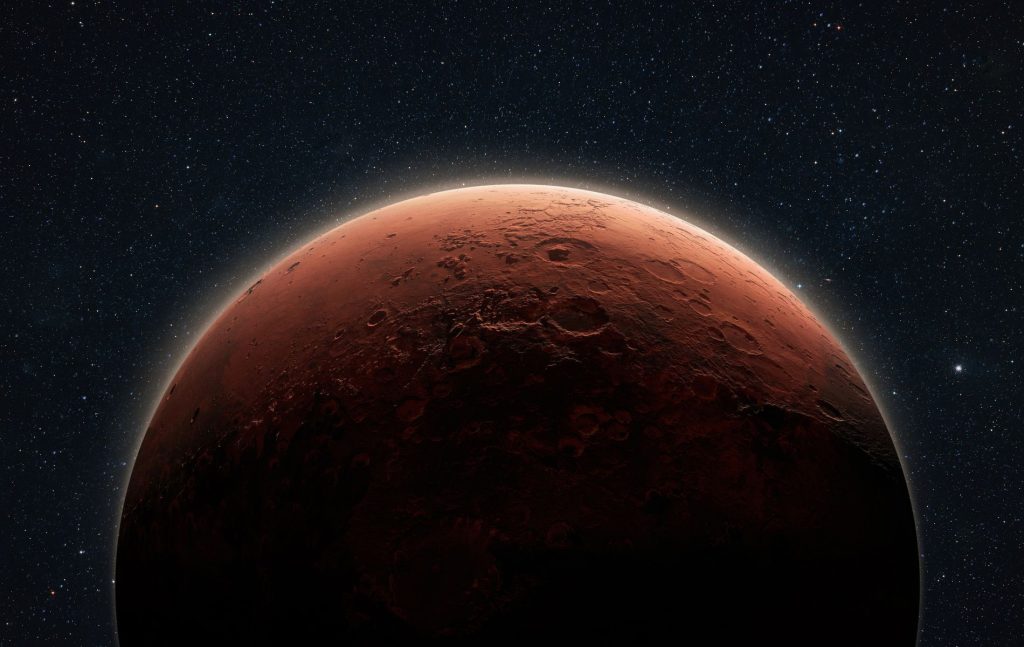Important news: Scientists have discovered a huge volcano on the surface of Mars. The special thing about this is that a lot of glacial ice is found nearby. This makes researchers think: Could the combination of heat and water have supported life in this place previously?
The new volcano does not have an official name yet, but for now it is called “Noctis Volcano.” The volcano's diameter is 450 kilometers and its height is more than 9,000 metres. The volcano is located west of Valles Marineres. The Grand Canyon of Mars. Perhaps the most special thing is that life may have developed here in the past. Scientist Pascal Lee contributed to the research. He explains: “Last year we found the remains of a glacier in this place. We were studying the geology of this. While investigating this, it suddenly clicked: we are dealing with a massive volcano that has undergone significant erosion. Search is possible here To find it.
Treasure hunt
Researchers discovered a number of different clues that eventually showed that this was a volcano. For example, a higher center can be clearly seen where the remains of a caldera are located; The center of the volcano is where a lava lake used to be. However, the most convincing evidence has less to do with the volcano than with the surrounding environment. Fellow scientist and team member Saurabh Shubham explains: “This part of Mars is known for the presence of many different hydrated minerals. Scientists have suspected for some time that there was a volcano in this location. So it is not very surprising that we will eventually find this volcano.”
However, scientists didn't just discover a huge volcano. The same research shows that the volcano is surrounded by a huge field filled with so-called “rootless cones.” These cones are usually caused by steam that rises explosively when a thin layer of volcanic (warm) material comes into contact with water or a similar icy surface. This “ice surface” was actually found last year, when Lee and Chobham's team discovered the remains of a glacier in the same area. They made this discovery at that time in a very deep cave, or in what now turns out to be a volcano. In this hollow they found sulphate salts, which turned out to have the morphological characteristics of a glacier. Combined with this new research, scientists suggest there could be a massive glacier beneath the surface.
Space pictures
Scientists have widely used space images and 3D models for research. A topographic map was eventually developed with the help of NASA Mars Global Surveyor. The data from this space probe was eventually combined with very clear images of the spacecraft Mars reconnaissance vehicle And Mars Express. Later, a 3D model of the environment was also created using the same data. By carefully studying these images and models, scientists were able to reach the conclusions they did.
Extraterrestrial life
The study's findings are important because the presence of both a glacier and a volcano in the same area may mean that life may have developed there. “It's actually a combination of multiple factors that makes the discovery of Noctis Volcano so exciting,” Lee says. “It's an ancient volcano that has been so eroded that you can easily collect data from different time periods. This area also has a long history of ice interacting with tremendous heat. This makes it Particularly interesting for astrobiological research and the search for extraterrestrial life. Finally, the glacial ice is still intact. This makes it particularly interesting to explore this in the future by people or robots on Mars itself.
Although the research confirms that different pieces of the puzzle are falling into place, some mysteries remain. It is clear that the volcano was active for a long time and also became active very early in Mars' history. But researchers do not know exactly when the volcano first erupted. In addition, it is currently unclear whether the volcano is still active and could therefore erupt again. Finally, the big question is of course whether the volcano – if it was active for a long time – made the surrounding area a place where life could emerge – aided by volcanic heat and melting glacial ice.

“Coffee buff. Twitter fanatic. Tv practitioner. Social media advocate. Pop culture ninja.”











More Stories
A unique image of atoms behaving like quantum waves
Dutch IT Channel – IT systems will provide ‘tax authorities’ with more room for changes from 2027′
Scientists are mixing bacteria with plastic to create a 'living plastic' that appears to have remarkably good properties